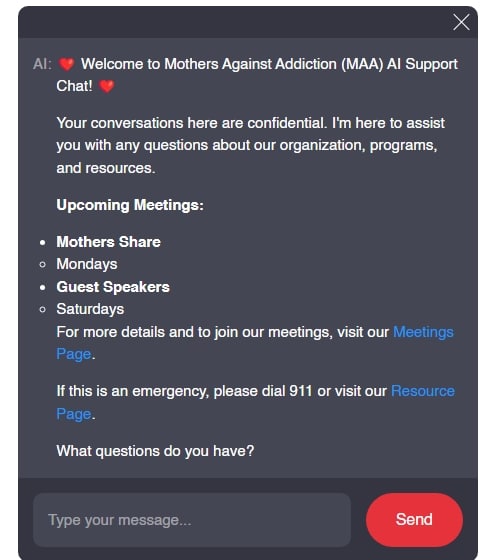Understanding post-traumatic stress disorder (PTSD) symptoms is crucial for anyone grappling with the fallout of traumatic experiences. While many folks know about the typical symptoms — think flashbacks, chronic anxiety, and nightmares — it’s the lesser-known manifestations that often shake people to their core. Grasping these symptoms helps shed light on the struggles faced by individuals, especially parents dealing with children caught in the devastating grip of addiction or those mourning a child lost to it. It’s heartbreaking, but understanding PTSD can pave the way for healing, connection, and hope.

Top 7 Post Traumatic Stress Disorder Symptoms That Shock You
– A common yet shocking PTSD symptom is emotional numbness. Those suffering may feel detached from their feelings and experiences. This emotional disengagement often leaves them unable to savor joy, love, or even sadness, creating an isolating bubble. Picture a veteran home from war, finding it nearly impossible to connect with family — they may miss birthdays, anniversaries, and everyday moments that give life meaning. This numbness isn’t a choice; it’s a survival mechanism, and that’s important to recognize.
– Think your mind is your best friend? For many with PTSD, it can feel like your mind’s turned rogue. Intrusive thoughts and distressing memories may flood their day, making it nearly impossible to concentrate on routine tasks. Consider research from the Department of Veterans Affairs highlighting that around 70% of veterans face these haunting thoughts. They disrupt daily routines, making recovery feel like an uphill battle.
– Now, you may think this is all in your head, but PTSD can lead to some very real physical issues. It’s not just about mental turmoil; PTSD can leave individuals dealing with chronic pain, digestive problems, and an increased risk of heart disease. A study published in “The Journal of Traumatic Stress” illustrates this, stating those with PTSD are 1.5 times more likely to develop chronic conditions. It’s crucial to see that healing involves tending to both body and mind.
– Here’s where it gets really thorny. Some people experience profound dissociation, feeling disconnected from their bodies or surroundings; it’s often described as an out-of-body experience. Actress Selma Blair has shared riveting stories about her struggles with this symptom, illustrating the intense journey through trauma and physical health challenges. This detachment can disrupt daily life, making ordinary tasks feel monumental.
– Ever feel like there’s danger around every corner? For many with PTSD, that’s daily life. Hypervigilance keeps them in a constant state of alertness, making it hard to relax. A car backfiring might provoke a panic reaction, reminiscent of a previous traumatic event. This heightened awareness can lead to insomnia or feeling jumpy over small noises, ultimately affecting their ability to enjoy life.
– Managing feelings of pain and trauma can lead some down dangerous paths. Self-destructive behaviors often emerge — be it substance abuse, reckless driving, or self-harm. For instance, survivors of assault may turn to alcohol or drugs in a desperate attempt to escape vivid memories. Unfortunately, this only complicates their situation, risking physical safety and emotional health further.
– Grieving is hard enough, but those with PTSD may experience complicated grief. When a loved one is lost, especially due to the dark shadows of addiction, the pain intensifies. Parents might feel an overwhelming mix of guilt, regret, and helplessness that clouds their healing process. The feelings are tumultuous, and navigating that grief can often feel like scaling a rocky mountain without hiking gear.

The Path to Understanding and Healing
Recognizing these shocking symptoms of post-traumatic stress disorder is vital for building empathy and support. Understanding the broad spectrum of PTSD symptoms means friends and family can foster a kind and nurturing environment conducive to recovery. It’s essential to encourage open discussions about mental health and increase access to resources like therapy and support groups. These avenues can guide individuals on a hopeful path to healing.
As we dive deeper into a world that is becoming more aware of mental health challenges, bridging the gap between knowledge and compassion is ever so important. No one dealing with post-traumatic stress disorder should feel they’re fighting their battles alone. Education and positive communication create pathways towards recovery, emphasizing the unique experiences and symptoms of those confronting PTSD.
For families reeling from the impact of addiction, whether through the struggles of a living child or through the tragic loss of a child, knowing that support is available is a beacon of hope. Resources like Mothers Against addiction provide not just information, but connection and community.
So let’s stand together, shoulder to shoulder, as we work to understand, support, and uplift those grappling with the heaviness of PTSD. Through shared stories, compassion, and dedication to healing, we can illuminate paths towards recovery and resilience.
Understanding Post Traumatic Stress Disorder Symptoms
When diving deep into the realm of post traumatic stress disorder symptoms, it’s vital to realize just how diverse and impactful these symptoms can be. For veterans or survivors of violence, these symptoms can manifest in ways that may seem shocking to outsiders. Did you know that approximately 7-8% of the population will experience PTSD at some point in their lives? Just like with addiction, support and understanding can play a crucial role in recovery, similar to the resources offered by organizations like Mothers Against addiction.
Common and Surprising Symptoms
You might think of flashbacks and nightmares as the trademarks of PTSD, but there’s a lot more to the picture. Individuals might experience severe anxiety, mood swings, or even a detachment from reality. Interestingly, one symptom that many overlook is the physical reaction to reminders of trauma – think of it as a stair slide where one can suddenly be pushed back into a traumatic event without warning. This physical response can be as overwhelming as any psychological distress! In fact, the Indian Health service emphasizes how essential it is to address these symptoms holistically, recognizing the mind-body connection in healing.
Emotional Impact and Coping Strategies
Living with post traumatic stress disorder symptoms often means navigating a complex emotional landscape. It’s not just about the big events either; everyday stresses can trigger reactions. Some individuals may even feel guilty or ashamed of their condition, which can lead to feelings of isolation. On a lighter note, actors like Rosa Salazar have used their platforms to speak openly about mental health, helping to destigmatize these conversations. Humor and art can play a role in coping, much like how something unexpected can lighten the mood—ever seen a cute puppy Manwha raw comic? It’s little sparks of joy that help balance the weight of trauma.
In a world where we’re constantly bombarded with pressures—be it through media, like the appeal of Margot Robbie hot, or the complexities of relationships—it’s crucial for individuals suffering from PTSD to find reliable support systems. Resources such as define dud could serve as starting points for conversation and healing. If you or someone you care about is grappling with these symptoms, don’t hesitate to reach out for help; organizations are geared towards providing critical interventions and understanding to pave the way to recovery.





























